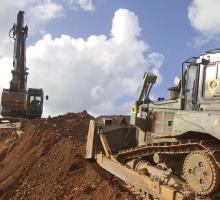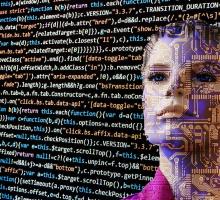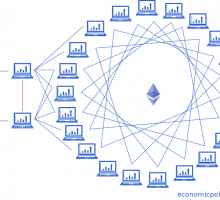The Internet of Things is a network of devices, that are able to gather and exchange information among them and with other computers or servers; and to take decisions by themselves or to receive instructions from other devices or servers.
There are a lot of devices that can have this capacity:
- In the consumption sector: smartphones, cars, refrigerators, washing machines, ovens, heating systems, smart homes, etc.
- In the industry sector: machines, printers, trucks, lathes, etc.
- In the services sector: automatic chat bots, automatic voice support, automatic tax or legal assistants, medical devices that sensor heart, temperature and glucose levels, etc.
- In the commercial sector: servers could connect with consumption devices to automatically provide goods and services, think about a refrigerator that learns from consumption patterns to automatically make online orders. Intelligent drones could deliver food.
- In the government sector: intelligent traffic lights integrated into an intelligent automatic traffic system that manages also a network of public transport. Sensors that detect ice on the road, drones that monitor for fire hazards in the woods, etc.
Integration of Cloud Computing and the Internet of Things
Cloud applications are a keystone for the Internet of Things. Cloud computing means that a network of servers is able to receive information from devices and other servers, store and process this huge amount of information, and send information or instructions to other devices or servers that are geographically dispersed. Cloud computing is already used in many applications, and in the future, many devices will take advantage of the Cloud.
Privacy and Security
The fact that there are more devices connected to the Internet poses concerns regarding the security and privacy of the users.
It increases the risk that hackers will breach systems or devices to steal information or assets. When systems become more complex, the probability of a vulnerability increases. A lot of big firms and government agencies have been victims of cyber attacks.
At the same time, when systems become more complex, it is more difficult to globally understand the internal workings of the system. An artificial intelligent system can learn from experience and adapt itself. The complexity and size of an intelligent system can make difficult to discover internal bugs or external manipulation, in particular, for end users of the system.
When more devices connect to the internet and exchange information with people, the data and the system could be used by companies and government to subtly but deliberately influence the behavior of consumers and voters. This can imply a loss of freedom, both at the individual and at the collective level. The delegation of the decision making, could lead to a sort of “programming of the behavior” of individuals and groups.
The future: intelligent systems could replace humans in a lot of decisions makings
Supply Side
How many decisions making jobs will be replaced by intelligent devices and programs? Jobs like taxi drivers can be easily replaced by intelligent self-driving cars. The question is if computer can take more complex decisions like production planning, giving legal and tax advice or planning the development of cities. In this case, the impact at the labor market level will be much bigger.
Artificial intelligent is developing fast. Computer programs are quickly improving its capacity to “learn by themselves” and improvise solutions to new problems. The investment in artificial intelligence development has grown a lot in recent years. Google, IBM and Microsoft are some firms that are heavy investing in the artificial intelligence sector.

source: cbinsights.com
The replacement of jobs caused by technological innovation is not something new. During the first industrial revolution, a lot of jobs where replaced by machines. In recent decades, robots replaced humans in a lot of repetitive an mechanical jobs. But the difference with previous technological disruptions, is that the development of the Internet of Things will lead to the replacement of humans in jobs that require learning skills, improvisation and the analysis of a lot of information. A lot of intelligent devices will have the ability to recognize pictures and human language.
The impact could be so big, that some annalists are speaking of the “fourth industrial revolution”.
Demand Side
By analyzing individual consumption patterns and a lot of data, some devices could foresee which products and services will match our needs.
A smart home can take into account not only the room and outside temperature and weather forecast, but also the price of different sources of energy at any time. A refrigerator can learn from our consumption patterns, but also can take into account the prices and special offers from different providers to make purchases.
Conclusions
The Internet of Things poses an opportunity to improve the quality of life and the efficiency in the use of resources. It can have a big impact in our daily lives. It will also affect the way we interact with our providers and the government.
The Internet of Things can have a substancial effect on labor markets and on the operation of the economical and government systems.




